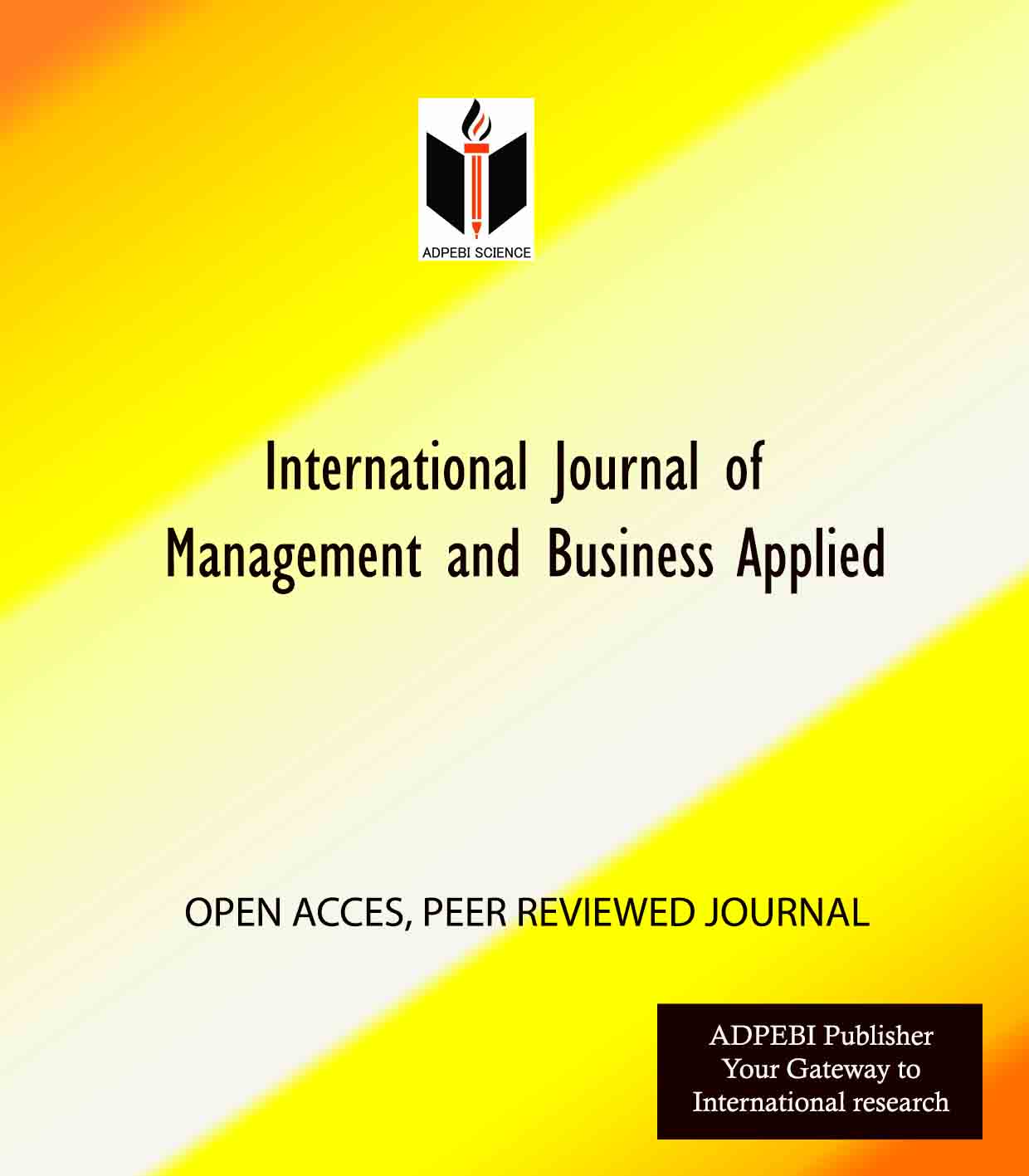The Value Perception in Luxury Goods Towards Purchase Intention Moderated By Disposable Income
DOI:
https://doi.org/10.54099/ijmba.v3i2.711Keywords:
Luxury Perception, Luxury Purchase Intention, Disposable IncomeAbstract
Purpose – This paper seeks to introduce a fresh dimension to the concept of luxury perception, drawing from a synthesis of previous research frameworks. Consequently, the study underscores the importance of assessing the reliability and validity of variables within a culturally diverse environment, particularly within Indonesia's context. The chance of a business opportunity based on changes in the dynamics of the bicycle market that has occurred since the COVID-19 outbreak is the reason for researchers to investigate consumer buying interest, especially purchasing bicycles.. Methodology/approach – A survey that included information on Luxury Value Perception towards purchase intention that moderated by Disposable income was used to collect data from 414 respondents, whom since the Pandemic outbreak searching and seeking info about buying a bicycle. Findings – It was found that hedonic value, social value, and uniqueness value towards purchase intention were generally significant predictors while the other value have weak significancy, and the disposable income in general were positively and significantly influence the purchase intention.
References
AKSU, S. (2020). Luxury Perception of Low and Middle Disposable income Generation Z and Their Luxury Consumption Motivations. International Journal of Social, Political and Economic Research, 7(4), 939–959. https://doi.org/10.46291/ijospervol7iss4pp939-959
CAMCASTLE, C. (2008). Beccaria’s Luxury of Comfort and Happiness of the Greatest Number. Utilitas, 20(1), 1–20. https://doi.org/10.1017/s0953820807002877
Chattalas, M., & Shukla, P. (2015). Impact of value perceptions on luxury purchase intentions: a developed market comparison. Luxury Research J., 1(1), 40. https://doi.org/10.1504/lrj.2015.069806
de Carvalho, R. M. R. V. (2014). The Impact of Luxury Values and Luxury Marketing Factors on Generation Y’s Behavioural Intentions. April. https://repositorio.iscte-iul.pt/handle/10071/8473
Ghozali, I. (2014). Structural Equation Modeling, Metode Alternatif Dengan Partial Least Square (PLS), Dilengkapi Software Smartpls 3.0, Xlstat 2014, dan WarpPLS 4.0 Edisi 4. Semarang: Badan Penerbit Universitas Diponegoro.
Ghozali, I., & Latan, H. (2014). PARTIAL LEAST SQUARES konsep, metode dan Aplikasi menggunakan program WarpPLS 4.0. Semarang: Badan Penerbit Universitas Diponegoro.
Gustiawan, W. D. (2015). ALASAN KONSUMEN DALAM MENGKONSUMSI (MEMBELI DAN MEMAKAI) SEPEDA SEBAGAI BARANG MEWAH. Jurnal Ilmiah Mahasiswa FEB Universitas Brawijaya, 4(1), 8. http://goowes.co/,2015
Haryono, S., & Wardoyo, P. (2012). Structural Equation modeling untuk Penelitian Manajemen Menggunakan AMOS 18.00. Bekasi: Penerbit PT Intermedia Personalia Utama.
Haryono, S. (2014). Mengenal Metode Structural Equation Modeling ( Sem ) Untuk Penelitian Manajemen menggunakan SMART PLS. Jurnal Ekonomi Dan Bisnis STIE YPN Vol. VII No. 1 Oktober 2014, VII(1), 23–34.
Hernández, B., Jiménez, J., & Martín, M. J. (2011). Age, gender and disposable income: Do they really moderate online shopping behaviour? Online Information Review, 35(1), 113–133. https://doi.org/10.1108/14684521111113614
Howard, J. A., & Sheth, J. N. (1969). The Theory of Buyer Behaviour. Wiley.
Indrawati. (2015). Metode Penelitian Manajemen dan Bisnis Konvergensi Teknologi Komunikasi dan Informasi (D. Sumayyah (Ed.)). PT Refika Aditama.
Jain, S. (2019). Exploring relationship between value perception and luxury purchase intention: A case of Indian millennials. Journal of Fashion Marketing and Management, 23(4), 414–439. https://doi.org/10.1108/JFMM-10-2018-0133
Kotler, P., & Armstrong, G. (2017). Principles of Marketing (Seventeenth Edition). In The great impulse challenge.
Kotler, P., & Keller, K. L. (2015). Marketing Management. Pearson.
Nwankwo, S., Hamelin, N., & Khaled, M. (2014). Consumer values, motivation and purchase intention for luxury goods. Journal of Retailing and Consumer Services, 21(5), 735–744. https://doi.org/10.1016/j.jretconser.2014.05.003
Pajak Penjualan Atas Barang Mewah (PPnBM). (n.d.). Retrieved March 30, 2021, from https://www.online-pajak.com/seputar-efaktur-ppn/pajak-penjualan-atas-barang-mewah-ppnbm
Schiffman, L., & Kanuk, L. (2014). Consumer Behaviour, Global Edition (11th ed.). Pearson Education.
Shukla, P. (2010). Status consumption in cross-national context: Socio-psychological, brand and situational antecedents. International Marketing Review, 27(1), 108–129. https://doi.org/10.1108/02651331011020429
Sugiyono. (2019). Metode Penelitian Kuantitatif (Setiyawami (Ed.)). Bandung. CV Alfabeta.
Sugiyono. (2015). Metodologi Penelitian dan Pengembangan: Research and Development / R&D. Bandung: CV. ALFABETA.
Sugiyono. (2016). Statistika Untuk Penelitian, Cetakan ke-28. Bandung: CV. ALFABETA (Penerbit Afabeta).
Sugiyono. (2017). Statistika untuk Penelitian. Bandung: Afabeta.
Suhartanto, D. (2014). Metode Riset Pemasaran. Bandung: Alfabeta.
Tiruwa, A., Yadav, R., & Suri, P. K. (2018). Moderating effects of age, disposable income and internet usage on Online Brand Community (OBC)-induced purchase intention. Journal of Advances in Management Research, 15(3), 367–392. https://doi.org/10.1108/JAMR-04-2017-0043
Wang, J., Pham, T. L., & Dang, V. T. (2020). Environmental consciousness and organic food purchase intention: A moderated mediation model of perceived food quality and price sensitivity. International Journal of Environmental Research and Public Health, 17(3), 1–18. https://doi.org/10.3390/ijerph17030850
Widodo. (2017). Metodologi Penelitian: Populer & Praktis. Jakarta: PT. Raja Grafindo Persada.
Widoyoko, E. P. (2020). Teknik Penyusunan Instrumen Penelitian. Pustaka Pelajar.
Downloads
Published
How to Cite
Issue
Section
License
Copyright (c) 2024 International Journal of Management and Business Applied

This work is licensed under a Creative Commons Attribution-NonCommercial 4.0 International License.









